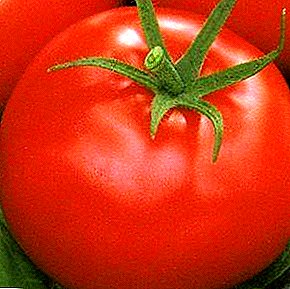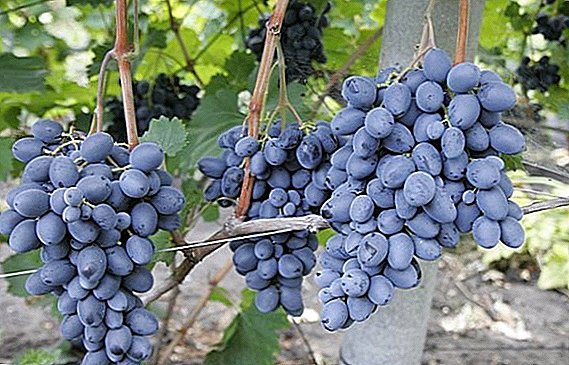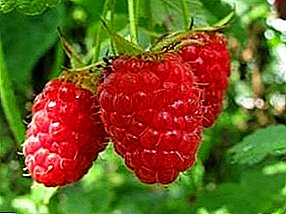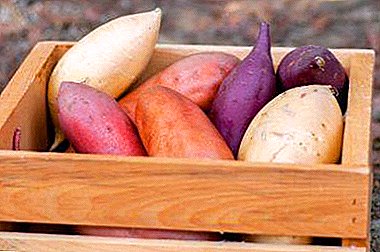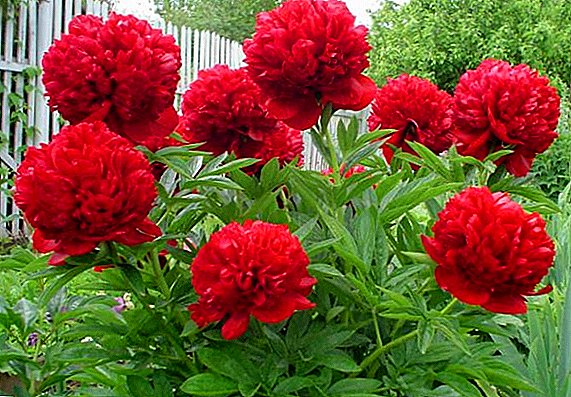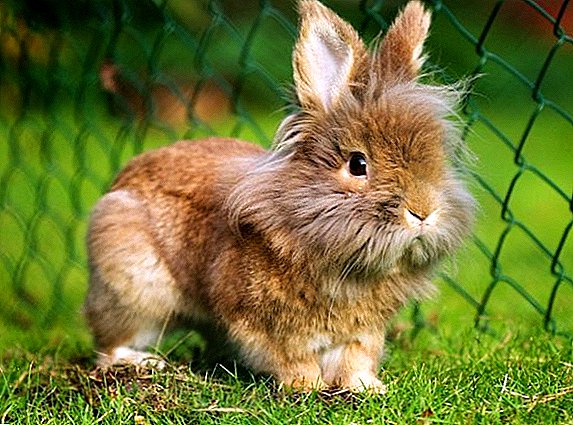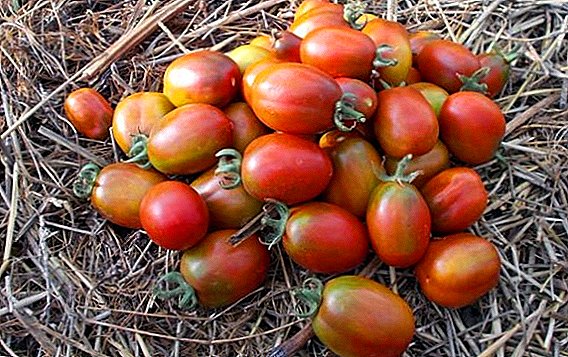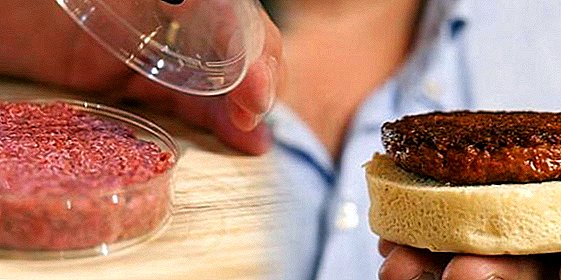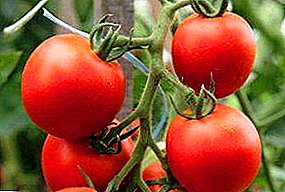
Hybrid Kostroma F1 is of interest both for owners of outhouse areas for excellent taste and versatility of tomato use, and for farmers for their precocity and good presentation.
In this article we have collected the most important information about the variety Kostroma: description and main characteristics, advantages and disadvantages, especially cultivation.
Tomato "Kostroma" F1: description of the variety
| Grade name | Kostroma |
| general description | Early ripe, semi-determinant variety for cultivation in the greenhouse |
| Originator | Russia |
| Ripening | 103-108 days |
| The form | Flat rounded fruits |
| Colour | Red |
| Average tomato mass | 85-145 grams |
| Application | Universal application |
| Yield varieties | 4.5-5 kg per plant |
| Features of growing | The best hybrid yield shows when grown in one stem |
| Disease resistance | Shows resistance to major diseases. |
 The plant with a bush of semi-determinant type, reaches a height of 1.9-2.1 meters when grown in a greenhouse made of glass or polycarbonate, in a greenhouse and under a film. Planted in open ground is not recommended. The variety has early ripening. From planting seeds to the collection of the first fruits you are separated 103-108 days. Quite a large number of leaves, the usual form of tomato, green. Read about the indeterminate varieties of tomatoes here.
The plant with a bush of semi-determinant type, reaches a height of 1.9-2.1 meters when grown in a greenhouse made of glass or polycarbonate, in a greenhouse and under a film. Planted in open ground is not recommended. The variety has early ripening. From planting seeds to the collection of the first fruits you are separated 103-108 days. Quite a large number of leaves, the usual form of tomato, green. Read about the indeterminate varieties of tomatoes here.
The advantages of the variety include:
- high yield;
- early ripening;
- good safety during transportation;
- resistance to major diseases of the tomato;
- the ability to form fruits with temperature drops;
- immunity to low humidity.
You can compare the yield of this variety with others in the table below:
| Grade name | Yield |
| Kostroma | 4.5-5.0 kg from a bush |
| Nastya | 10-12 kg per square meter |
| Bella Rosa | 5-7 kg per square meter |
| Banana red | 3 kg from a bush |
| Gulliver | 7 kg from a bush |
| Lady shedi | 7.5 kg per square meter |
| Pink Lady | 25 kg per square meter |
| Honey heart | 8.5 kg from a bush |
| Fat jack | 5-6 kg from a bush |
| Broody | 10-11 kg per square meter |
 Read on our site: the secrets of technology for the cultivation of early varieties.
Read on our site: the secrets of technology for the cultivation of early varieties.How to get a huge crop of tomatoes in the open field and how to do it all year round in the greenhouse.
Conditional disadvantages include:
- the requirement of a greenhouse for cultivation;
- the need to form bushes on the trellis;
- Require garter brushes to prevent clipping.
Characteristics of the fruit:
- The shape of the fruit is flat-round smooth.
- The color is well pronounced bright red.
- The average weight is 85-145 grams, tomatoes are collected in brushes of 6-9 pieces.
- Fruits of dessert taste, good in salads, lecho, sauces, great for salting whole.
- The average yield of 4.5-5.0 kilograms from a bush when planting no more than 3 plants per square meter of land.
- Good presentation, excellent preservation during transport.
You can compare the weight of fruits with other varieties in the table below:
| Grade name | Fruit weight |
| Kostroma | 85-145 grams |
| Doll | 250-400 grams |
| Summer resident | 55-110 grams |
| Lazy man | 300-400 grams |
| The president | 250-300 grams |
| Buyan | 100-180 grams |
| Kostroma | 85-145 grams |
| Sweet bunch | 15-20 grams |
| Black bunch | 50-70 grams |
| Stolypin | 90-120 grams |
A photo
You can get acquainted with tomato “Kostroma” in the photo:




Features of growing
Seeds for seedlings pickled with 2% solution of potassium permanganate, planted on seedlings in the prepared soil to a depth of 2.0-2.5 centimeters in the first decade of April. You can plant in a mini-greenhouse and use growth promoters to speed up the process. When the first leaf appears, pick it up, aligning it with a fertilizer with complex mineral fertilizer.
When transferring seedlings to the ridges, treat with potassium humate. The first brush with fruits is laid above 9-10 sheets, further formation goes through 2-3 sheets. Brushes contain 9-10 fruits. The best hybrid yield shows when grown in one stem.
Experienced gardeners advise to form a shrub by pinching on a vertical trellis with the obligatory garter of brushes. After laying the fifth brush, it is recommended to start removing 2-4 leaves at the bottom of the bush every 5-7 days. This will ensure improved soil ventilation in the wells, as well as enhance the flow of nutrients to the tomatoes.
After the formation of 8-10 brushes experienced gardeners advise to limit the growth of the bush by pinching the main shoot. In this case, at least two leaves should remain above the last brush formed. The hybrid shows resistance to basic diseases of tomatoes, has the ability to form fruits, even with temperature changes.
Further care of the plants consists in loosening the soil, watering with warm water after sunset, removing weeds and mulching, fertilizing with mineral fertilizers 2-3 times during the growth and formation of brushes of tomatoes.
For fertilizing you can use: organic fertilizers, ammonia, hydrogen peroxide, boric acid, iodine and yeast.
Diseases and pests
This variety shows resistance to major diseases, but information about them and control and protection measures may be useful.
Read all about Alternaria, Fusarium, Verticillium, Blight and protection against it. As well as articles about varieties of tomatoes resistant to diseases and showing at the same time also high yields, which are not 100% free from late blight.
Gardeners who planted a hybrid variety of tomato Kostroma F1 include it in the list of annual plantings for high yields, resistance to diseases, versatility of fruit application.
In the table below you will find links to varieties of tomatoes with different ripening terms:
| Mid-season | Middle late | Late-ripening |
| Gina | Abakansky pink | Bobcat |
| Ox ears | French grapevine | Russian size |
| Roma f1 | Yellow banana | King of Kings |
| Black Prince | Titanium | Long keeper |
| Lorraine beauty | Slot f1 | Grandma's Gift |
| Stellate sturgeon | Volgogradsky 5 95 | Podsinskoe miracle |
| Intuition | Krasnobay f1 | Brown sugar |


